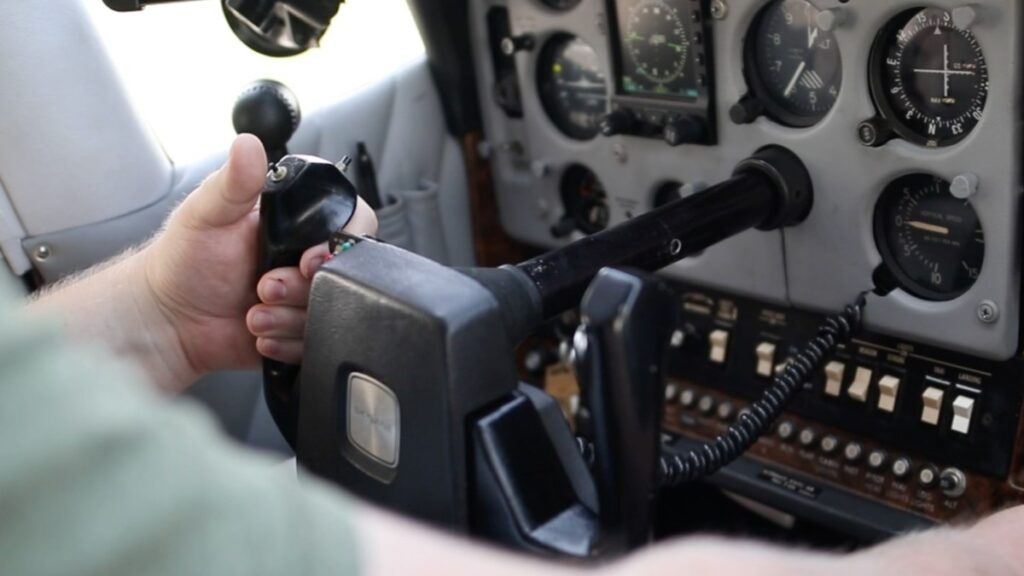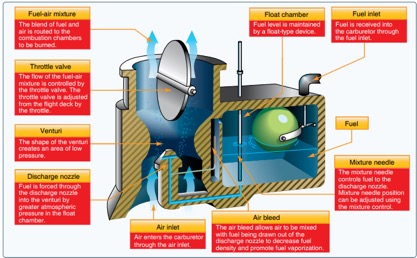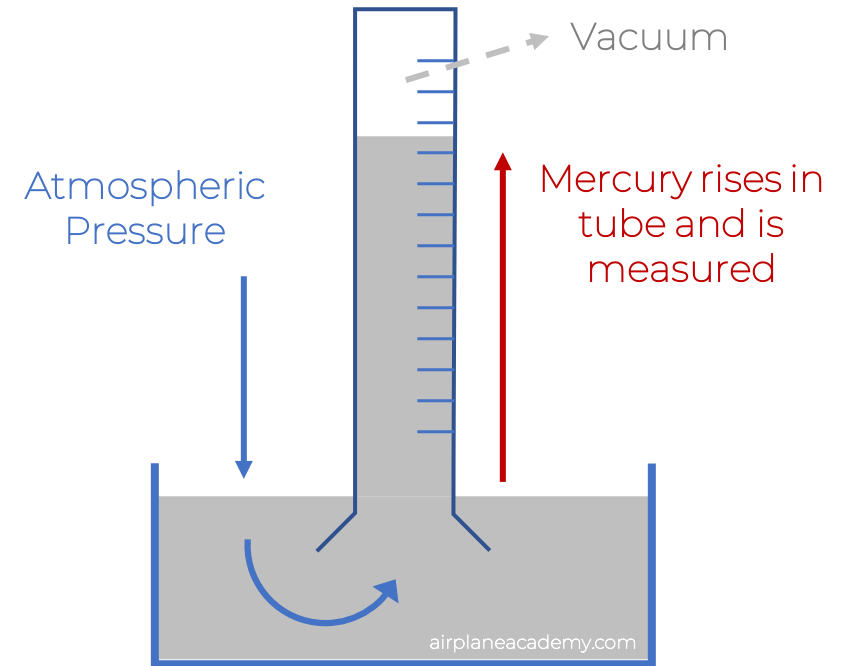
Engine RPM’s are the primary way to set power in aircraft without a constant-speed propeller. The manifold pressure gauge is a primary engine instrument used to set power in aircraft with constant-speed propellers.
While propeller RPM’s are fairly intuitive to understand, manifold pressure can be a little more elusive as it is measured in inches of mercury. Why is manifold pressure measured in inches of mercury?
Manifold pressure is measured in inches of mercury (inHg) because that is the standard measurement of air pressure in the United States. The air pressure generated by the engine within the intake manifold is one of the best ways to measure the power being generated by a piston-powered aircraft engine with a constant speed propeller.
Power output of the engine can be measured a couple of ways in the piston-powered aircraft we fly: manifold pressure and propeller RPM. Let’s look at why “inches of mercury” is a unit of measurement and how that relates to operating our reciprocating aircraft engines.
What is manifold pressure?
As was discussed in our article Why does lower prop RPM cause an increase in manifold pressure?, manifold pressure is a measure of the absolute pressure of the fuel/air mixture within the intake manifold of the aircraft engine.
The intake manifold is a chamber that lies just upstream from the intake valves at the cylinder. As the piston moves away from the intake valve, it draws the air and fuel mixture from the manifold and into the cylinder.
Manifold pressure is the measure of the air pressure within that chamber – or the lack thereof.

The pressure of that fuel/air mixture passing through the manifold is actually the result of the suction produced by the piston drawing it into the cylinder.
Manifold pressure is really more like a measurement of the suction.
A vacuum is created by the piston as it moves downward away from the valve. When we adjust the throttle, we are controlling how much air and fuel is able to pass by the throttle and into the cylinder.
The more fuel/air that reaches the cylinder, the bigger the bang creating more power as the power stroke becomes more forceful.

In a normally aspirated aircraft, if the throttle is wide-open, allowing as much air as possible to pass through the valves – that pressure will approximate the ambient air pressure.
This is evidenced by looking at the manifold pressure gauge during takeoff, it should read pretty close to whatever the altimeter setting is at the time.

Image Credit: Chapter 7 Pilot’s Handbook of Aeronautical Knowledge
When the throttle is reduced, the pistons are still trying to suck air through the intake valve from the manifold.
However, the throttle is not allowing that to happen. That lowers the air pressure in the manifold as indicated by a lower manifold pressure reading on the manifold pressure gauge.
At idle it may be somewhere around 12” – 15”. If it were significantly higher than that, it could indicate a leak somewhere in the induction system.
In an aircraft with a fixed pitch propeller, you likely don’t even have a manifold pressure gauge. When you set the power, it is done using the RPM gauge.
Although simpler, it may not be as accurate as the manifold pressure gauge especially when setting takeoff power before the aircraft has started to pick-up speed. In this case it is important to know what the minimum static RPM for your aircraft is when at full throttle.
Why is “inches of mercury” used as a unit of measurement?
The measurement of atmospheric pressure goes back a long way – much farther back in history than the engine.
In 1643, a mathematician named Evangelista Torricelli discovered that a glass tube of mercury that was closed at the top would rise and fall on different days (the bottom was within a puddle of the very toxic mercury contained by a dish).
After some further experimenting with a second open tube alongside, he was able to surmise that it could only be air pressure acting on the mercury causing it to rise and fall.
The tubes were calibrated in inches and “inches of mercury” became the standard.

Interestingly, other liquids would work as well. Water, for example, could be used in the same way.
However, because water is so much lighter than mercury, the tube would have to be somewhere in the neighborhood of 33 feet high to exert 14.5 pounds per square inch. Mercury only needs a tube about 30” high for the same pressure.
But you already knew that since the standard atmospheric pressure is 29.92 in/hg at sea level! For more reading on this, see our article on why 29.92 is the standard atmospheric pressure.
Why inches of mercury and not hector-pascals or millibars?
Atmospheric pressure, in a good chunk of the world, is expressed in hector-pascals (hPa) which has replaced millibars (mb) – even though it is exactly the same number.
So, while you may receive altimeter settings in hPa, inHg is still used in the cockpit when it comes to power settings.
My only explanation for this is because the main piston engine manufacturers like Lycoming, Continental, and Rotax all use inHg as the standard for measuring manifold pressure. There is no practical reason why the other units of measurement could not be used.
Practical application of setting power using inches of manifold pressure
In an aircraft with a constant speed propellor, the propellor governor does exactly that – it attempts to keep the propellor at a constant speed.
For example, during flight in a cruise configuration, if the prop lever is pulled back until the prop RPM is at 2,400, the pilot should be able to manipulate the throttle across a fairly wide range of manifold pressure without the RPM changing.
This is why accurate power settings utilize both the manifold pressure gauge and the RPM gauge.
On takeoff, assuming we’re flying a normally-aspirated aircraft, the manifold pressure at full throttle should approximate the ambient atmospheric pressure and the prop RPM should cozy right up to the maximum allowable RPM – the RPM red line.
Your aircraft may have manifold pressure or RPM limitations when at full power.. For example, the POH may specify that take off power can only be used for a short amount of time.
Therefore, after takeoff, when safe to do so, the power may need to be reduced to the recommended climb power setting. This is typically accomplished by reducing the manifold pressure first and then adjusting the prop RPM.
At cruise, when setting the power, the pilot’s operating handbook will specify what manifold pressure and RPM combination to use in order to obtain a desired power setting; 75%, 65%, etc.
As with climb power, good technique typically involves reducing manifold pressure first followed by the prop RPM. If power is being increased to a higher cruise power setting or to climb to a high altitude, increase the RPM first and then increase the manifold pressure to the desired setting. This is typically to avoid manifold pressure and RPM “oversquare” situations which we discuss in this article.



